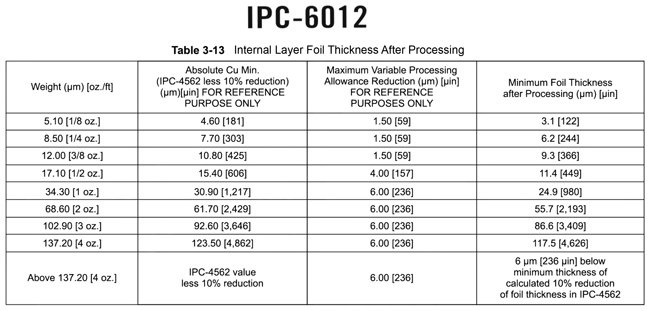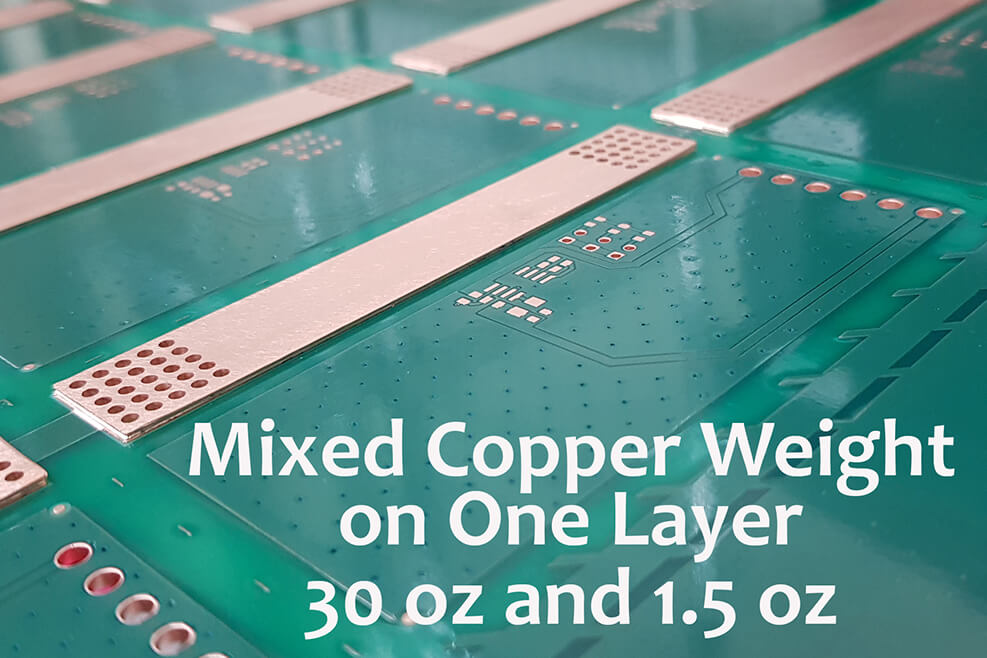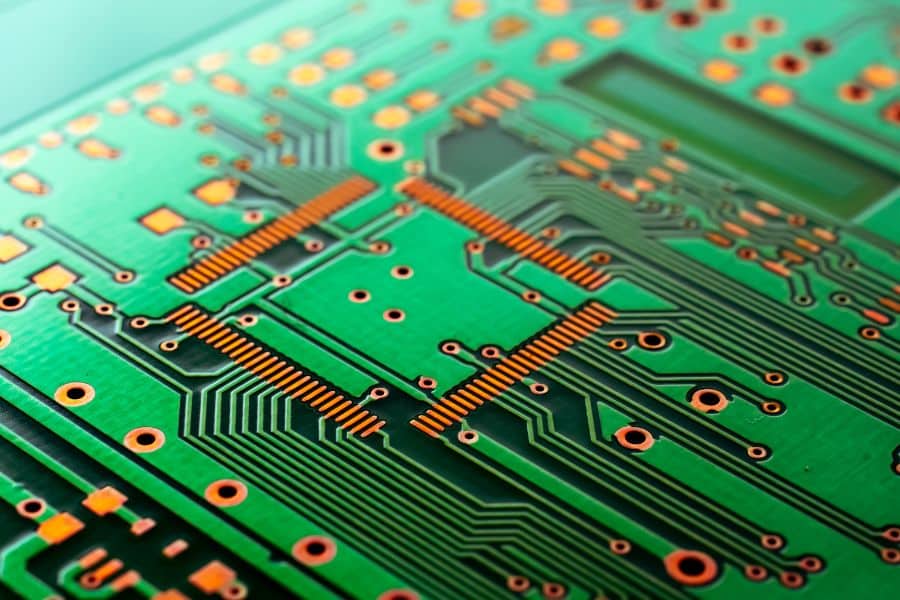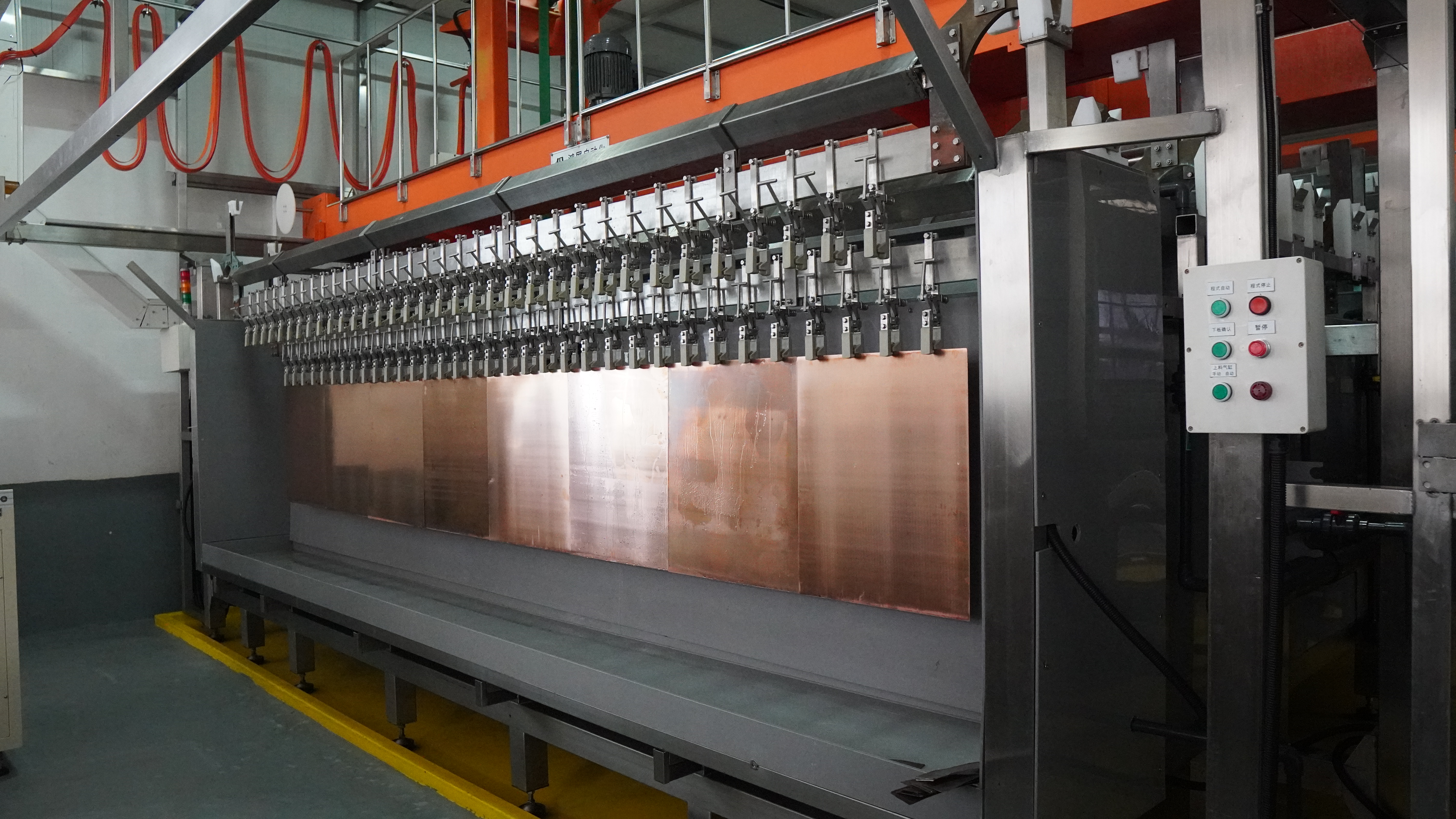Printed circuit boards (PCBs) are the backbone of modern electronics, and choosing the right copper weight is a critical decision for engineers. Copper weight, typically measured in ounces per square foot (oz/ft²), directly impacts a PCB's current-carrying capacity, thermal performance, and overall reliability. The most common options, 1oz and 2oz copper, each have distinct advantages and trade-offs. In this blog, we dive into the differences between 1oz and 2oz copper, explore their current-carrying capacities, and provide practical guidance to help engineers make informed design choices.
Whether you're designing a low-power microcontroller circuit or a high-current power supply, understanding copper weight is essential for optimizing performance and cost. Let's break down the technical details, compare the two options, and highlight key considerations for your next PCB project.
What Is Copper Weight in PCBs?
Copper weight refers to the thickness of the copper foil used on a PCB, expressed as the weight of copper spread evenly over one square foot. This measurement correlates directly to the foil's thickness:
- 1oz copper: 1 ounce of copper per square foot, equivalent to approximately 1.37 mils (0.0348 mm or 34.8 µm).
- 2oz copper: 2 ounces of copper per square foot, equivalent to approximately 2.8 mils (0.070 mm or 70 µm).
The thicker the copper, the greater its cross-sectional area, which enhances its ability to carry current and dissipate heat. However, thicker copper also increases manufacturing costs and can complicate fine-pitch designs. Engineers must balance these factors based on their project's requirements.

Current-Carrying Capacity: 1oz vs. 2oz Copper
The current-carrying capacity of a PCB trace depends on its cross-sectional area (determined by copper weight and trace width), the allowable temperature rise, and environmental factors like airflow and board material. Let's compare the capacities of 1oz and 2oz copper based on industry standards, such as IPC-2221.
1oz Copper
For a 1oz copper trace, the current-carrying capacity is limited by its thinner profile. According to IPC-2221, a 10-mil-wide trace with 1oz copper can carry approximately 1 ampere (A) with a 10°C temperature rise. For a 50-mil-wide trace, the capacity increases to about 2.6A under the same conditions. These values assume standard FR-4 material and ambient temperatures.
1oz copper is suitable for most low-to-moderate power applications, such as:
- Digital circuits (e.g., microcontrollers with currents <1A).
- Interface ports (e.g., USB 2.0 traces carrying <500mA).
- Low-power LEDs (e.g., 20mA per LED, up to 1A for multiple LEDs).
However, for high-current applications, 1oz copper may require wider traces, which can consume valuable board space and increase design complexity.
2oz Copper
2oz copper, with its doubled thickness, offers significantly higher current-carrying capacity. For the same 10-mil-wide trace, 2oz copper can handle approximately 2A with a 10°C temperature rise, and a 50-mil-wide trace can carry around 4.8A. This makes 2oz copper ideal for high-power applications, such as:
- Power supplies and converters (e.g., currents exceeding 5A).
- Automotive electronics (e.g., motor drivers drawing 10-50A).
- Solar panels and inverters (e.g., currents up to 100A with proper design).
The increased cross-sectional area reduces resistance, lowering voltage drops and heat generation. This allows 2oz copper to support higher currents without requiring excessively wide traces, preserving board space.
Thermal Management and Heat Dissipation
Copper weight also plays a crucial role in thermal management. Thicker copper conducts heat more effectively, reducing hot spots and improving overall board reliability.
- 1oz Copper: With a thermal conductivity of approximately 385 W/m-K, 1oz copper provides adequate heat dissipation for low-power circuits. However, in high-current scenarios, the limited thickness can lead to significant temperature rises, potentially exceeding the safe operating limits of components or the FR-4 substrate (typically 130°C for standard materials).
- 2oz Copper: The doubled thickness of 2oz copper halves thermal resistance compared to 1oz, allowing it to spread heat more efficiently across the board. This is particularly beneficial in power electronics, where components like MOSFETs or IGBTs generate substantial heat. For example, a 2oz copper plane can reduce peak temperatures by 10-20°C compared to a 1oz plane under similar current loads.
In high-temperature environments (e.g., automotive or aerospace applications), 2oz copper's superior thermal performance can extend component lifespan and prevent thermal runaway.
Signal Integrity and Impedance Control
Copper weight also affects signal integrity, particularly in high-speed and RF circuits where controlled impedance is critical.
- 1oz Copper: The thinner profile of 1oz copper is well-suited for high-density designs with fine traces (e.g., 4-6 mils wide). It allows for tighter spacing and is easier to etch, making it ideal for complex, high-speed digital circuits (e.g., DDR memory interfaces operating at 1-3 GHz). For a 50-ohm characteristic impedance, a 1oz copper trace on a standard 1.6mm FR-4 board typically requires a width of about 10-12 mils, which is manageable in most layouts.
- 2oz Copper: The thicker 2oz copper requires wider traces to achieve the same impedance, as impedance decreases with increasing conductor thickness. For a 50-ohm trace, a 2oz copper trace may need to be 15-18 mils wide, which can complicate routing in dense designs. However, 2oz copper's lower resistance reduces signal attenuation, improving performance in high-frequency AC signals (e.g., RF circuits operating at 5-10 GHz).
Engineers designing high-speed circuits should use simulation tools (e.g., Altium Designer or Cadence) to model impedance and verify trace geometries, especially when switching to 2oz copper.
Manufacturing Considerations and Costs
While 2oz copper offers superior electrical and thermal performance, it comes with manufacturing challenges and higher costs:
- Etching: Thicker 2oz copper requires longer etching times, which can lead to undercutting and less precise trace geometries. This increases the minimum trace width and spacing (e.g., 6-8 mils for 2oz vs. 4-5 mils for 1oz), limiting design flexibility in high-density boards.
- Lamination: The added thickness of 2oz copper can cause uneven pressure during lamination, potentially leading to board warping or delamination. Manufacturers must use balanced stackups (e.g., matching copper weights on top and bottom layers) to mitigate these issues.
- Cost: 2oz copper increases material costs by 20-50% compared to 1oz copper, depending on board size and layer count. Fabrication complexity also raises production costs, especially for multilayer boards.
1oz copper, being the industry standard, is more cost-effective and easier to manufacture. Most PCB fabricators assume 1oz copper unless otherwise specified, streamlining production for standard designs.
Design Strategies to Optimize Current-Carrying Capacity
To maximize current-carrying capacity without relying solely on thicker copper, engineers can employ several strategies:
1. Widen Traces: Increasing trace width is often the simplest way to boost current capacity. For example, doubling the width of a 1oz copper trace from 10 mils to 20 mils can increase its current capacity from 1A to approximately 1.8A (10°C rise).
2. Use Multiple Layers: Distributing current across parallel traces or planes on multiple layers reduces resistance and heat buildup. For instance, stitching two 1oz copper planes with vias can achieve similar performance to a single 2oz plane.
3. Add Solder Mask and Paste: For 1oz copper traces that are nearing their thermal limits, opening the solder mask and applying solder paste during reflow can increase the effective cross-sectional area, boosting current capacity by 10-20%.
4. Incorporate Copper Bus Bars: In extreme high-current applications (e.g., >100A), soldering copper bus bars onto PCB pads can handle currents that standard traces cannot.
5. Improve Cooling: Enhancing airflow with fans or adding heat sinks can allow 1oz copper to handle higher currents by reducing temperature rise.
These techniques can often make 1oz copper sufficient, reserving 2oz copper for applications where space or thermal constraints demand it.

When to Choose 1oz vs. 2oz Copper
Choosing between 1oz and 2oz copper depends on your project's electrical, thermal, and budgetary requirements:
- Choose 1oz Copper for:
- Low-to-moderate current applications (<5A).
- High-density designs requiring fine traces and tight spacing.
- Cost-sensitive projects where board space allows for wider traces.
- Standard digital or low-power analog circuits.
- Choose 2oz Copper for:
- High-current applications (>5A) or power electronics.
- Designs requiring enhanced thermal management or operation in high-temperature environments.
- Circuits where board space is limited, and wider traces are impractical.
- Applications demanding high reliability, such as automotive or aerospace.
For borderline cases, consider running a power delivery network (PDN) analysis using tools like Saturn PCB Toolkit to quantify voltage drops and temperature rises. A 10-20% safety margin above calculated current requirements is recommended to account for environmental variations.
How ALLPCB Supports Your PCB Design Needs
At ALLPCB, we understand the importance of selecting the right copper weight for your PCB's performance and reliability. Our advanced manufacturing capabilities support both 1oz and 2oz copper designs, with precise etching and lamination processes to ensure high-quality results. Whether you need quick-turn prototyping to test your high-current design or global logistics for large-scale production, we provide end-to-end solutions tailored to engineers' needs. Our team also offers design-for-manufacturability (DFM) reviews to optimize your stackup and trace geometries, helping you achieve the perfect balance of performance and cost.

Conclusion
The choice between 1oz and 2oz copper is a pivotal decision in PCB design, impacting current-carrying capacity, thermal management, signal integrity, and cost. 1oz copper is the go-to choice for most standard applications, offering a cost-effective and versatile solution for low-to-moderate power circuits. 2oz copper, with its superior current-handling and heat-dissipation capabilities, shines in high-power and high-reliability designs where space and thermal constraints are critical.
By understanding the trade-offs and leveraging design strategies like trace widening or via stitching, engineers can optimize their PCBs for performance and efficiency. Tools like IPC-2221 standards and PDN analysis software provide the data needed to make informed decisions, while partnering with a reliable manufacturer ensures your design is brought to life with precision.
Have questions about copper weight or need help with your next PCB project? Contact us at ALLPCB, and let's bring your ideas to reality with the perfect copper weight solution.
 ALLPCB
ALLPCB








